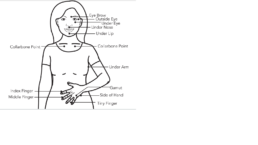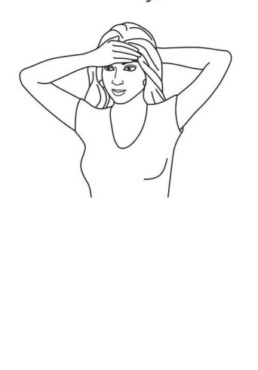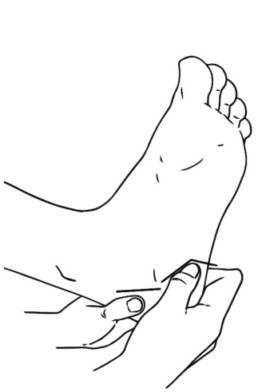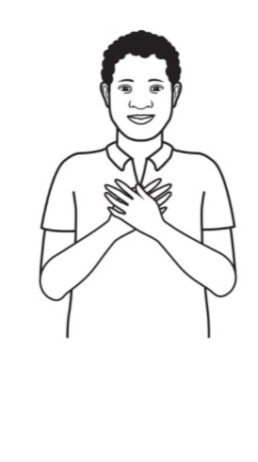Is the Brain the Origin of the Mind, or its Instrument?
In his recent blog, my colleague Bob Schwarz discusses mind and its relation to energy psychology. His piece is a synthetic review of the modern paradigm and its application to the field of energy psychology. I highly recommend giving it a thorough read. Bob quotes Dan Siegel, who posits that the mind is “created by the body interacting with the environment.” This sentence struck me, as it ties into a question that I have been pondering for decades, and that humans have for millennia. Is the brain the origin of the mind, or its instrument?
The intersection of brain and mind is a profound question that bears considering. My own musings, reading, and experience have lead me to conclude that the brain is not the origin of the mind, but rather, the organ of the mind. Greater minds than mine have weighed in on this quandary, and I’ll synthesize some of their points here. I’ll also share some of my experiences to illustrate those points.
The mechanistic view: is the brain the origin of the mind?
The mechanistic paradigm is very popular today, and indeed, has held sway throughout most of history. In this view, the mind arises from the material brain and its processes. Memories are stored in “file drawers” in the brain, and dreams are the random firing of neurons.
An alternate view
A different, more traditional, yet also more modern, conceptualization of mind is that the mind exists on subtle, nonphysical planes. It might be understood as energy rather than matter. In this paradigm, the brain is the organ of the mind, just as the eye is the organ of sight. This hinges on the idea that we are much more than the physical, having our existence on subtle, energy realms as well as the material.
Carl Jung posited the collective unconscious. This was a sort of 20th century, western reprise of Patanjali’s “raincloud of knowable things.” If we begin to think again about consciousness and mind as existing on subtle planes, which are as individual as they are universal, we can understand the interconnectedness of Being. The profundity of this understanding can open up new worlds of compassion, understanding, and healing.
Evidence for subtle mind
The question naturally arises: is there any evidence to back this up? Swami Sarvapriyananda, of the Vedanta Society of New York, speaks of the evidence supporting the subtle view. He ties his position to the hard problem of consciousness, posed by David Chalmers, co-director of the Center for Mind, Brain, and Consciousness at New York University. A good (video) summary of Chalmers’s view is here.
The hard problem of consciousness deals with subjective experience. Our subjective experiences include information from our five senses, as well as emotion and thought, sleeping and waking, dreaming and daydreaming, awareness and lack of awareness, and more. How can physical processes create such subjective experience? How can a physiology give rise to the experience of self? If the mind arises from brain processes, how do these physical processes create a subtle subjective experience? Why are we not robots? How do we come to have the sense of “I”?
An answer to the hard problem – and there are other, mechanistic attempts at solving it – is that the mind exists outside the brain, and the brain is its instrument. Chalmers claims a preference to a panpsychic viewpoint, which states that everything in the natural world has consciousness or a mind. The vedantists say it differently: consciousness is the ground of being. In either case, this view is closer to what we find in quantum physics than in Newtonian physics: phenomena are better understood as energy and relationship rather than as material.
Mind, consciousness, and brain
Definition of terms is essential to understanding and conversation. In this paper, consciousness is more than mind. It includes mind, but also includes emotion, physical sensation, awareness, and even the absence of awareness. Mind is a subset of consciousness, and it deals with thought. Thoughts, emotions, and physical feelings are three different experiences that we have in our waking consciousness. In deep sleep, mind, emotions, bodily feelings are quiet but consciousness persists; our brains, however, do not register it. Some thoughts are quite concrete and mundane; others are more subtle, ephemeral, at times inchoate. Some thoughts are local; others are most definitely nonlocal.
Experience underscores the point
Here is an example. Years ago, I was sitting in meditation in the early morning, trying not to fall asleep. I had almost given up and decided to have one more go at attention. A subway car window appeared in my mind. “Interesting, what’s that about?,” I thought. Next, a man with curly dark hair, wearing a white tee-shirt, dark pants and a black jacket came into view. Finally, and quit surprisingly, he spoke in French. “Merd. A’vous de la torche?” he asked.
At this point I gave up on my concentration efforts and went to take a shower. Why was there a man speaking French in my meditation? What was he saying? I racked my brain. Having studied French for years, but many years ago, I had the gist of things. Merd is pretty well known. He was speaking quickly and using the formal “vous” but not enunciating the formal “avez”, but rather slurred an “a’ vous.” It wasn’t till later that I remembered “torche” is a flashlight. And slightly later, I heard on the radio that the Chunnel train had gotten stuck on its way from Belgium. Do you have a flashlight? This could be coincidence. But it could also be an instance of minds relating because they not material, but are energy, and therefore connected.
Everyday examples
We have all had those “coincidental” experiences of nonlocal conscious connection with people we are close to: we call each other at the same time, say the same words almost in unison, know the person was going to stop by or call before they do, or think of someone and then have them get in touch, as if they “heard” us thinking. These can all be examples of nonlocal consciousness.
There are more unusual cases, too. A friend of mine “heard” in meditation that she had the BRCA genetic mutation. She insisted on getting tested, though there was no family history of breast or gynecologic cancer. Her doctors were quite skeptical when they asked why she wanted to get tested, and she gave her honest answer! She did indeed have the gene and underwent surgeries to eliminate the potential sources of cancer.
And there are other stories like my friend’s. For example, ACEP member Larry Burke published a book, Dreams that Can Save Your Life, which documents many cases of people who learned they had cancer through dreams. These dreams led them to early detection and a higher cure rate.
In a similar vein, other researchers are investigating synchronous dreams. These happen when two people have the same dream, and the experience is not as uncommon as you might think. One of my sons and I had a synchronous dream when he was a child.
All of these examples – dreams, meditations, “coincidences” – seem to support the idea that we are indeed more than meets the eye, and that our minds exist outside of material brain processes.
Energy Psychology examples
The first form of energy psychology is called Thought Field Therapy. The name itself seems to indicate that there is a thought field which is probably not physical or local, arising from the brain. Rather, it is a field of thought energy with which we are interacting, giving and taking. Research into this new paradigm is already underway. Our friends at HeartMath and IONS are spearheading some of these inquiries, and their findings are compelling.
Additionally, an interesting phenomenon that is known in EFT circles is the phenomenon of what we term “borrowing benefits.” In group sessions, one subject will be working on their issue at the front of the room. The rest of the audience is tapping along with the subject. The subject gets better, and moreover, the fellow tappers experience a reduction in distress related to their own related experiences – even though they were focused on someone else. Other interesting cases have people tap on behalf of others, nonlocally and asynchronously, and the recipients experience reduction in distress.
One of my favorite tales of nonlocal healing comes from a paper I read when I was studying for my master’s degree. Adina Golman Shore did her doctoral dissertation on Reiki and published her results in Alternative Therapies in Health and Medicine. I still remember reading her clever study, probably because I’ve been talking about it for the past eighteen years!
Three groups of people with depression and anxiety were given hands-on Reiki, distant Reiki, or a wait-list control. The people in both hands-on and distant Reiki groups received a significant reduction in symptoms. Moreover, the people receiving distant healing and those on the wait list did not know which group they were in. This is for me the most shining example of the power of nonlocal thought and energy. I hope that others will replicate Goldman Shore’s study and add to the body of research on this interesting topic.
Final thoughts
Much research is needed – and it is happening! – as the paradigm shifts from a mechanistic to an energetic concept of mind. Already, there is much evidence to support the idea that mind is energy working through the brain. The interesting cases that energy psychology often presents may be better understood or explained from an energy perspective rather than a material, mechanistic one.
What are your thoughts? Is this too woo-woo to be believed? Or do you subscribe to the nonlocal consciousness point of view? Is the brain the origin of the mind, or its instrument? I’d love to hear from you!
EFT is evidence-based: Research Update!
Dawson Church, Peta Stapleton, Anitha Vasudevan and Tom O'Keefe published an updated review in the online journal Frontiers. The review, Clinical EFT as an evidence-based practice for the treatment of psychological and physiological conditions: A systematic review, is an update on all the research on EFT. It shows – again! – that EFT is evidence-based.
The theory
Back in 2013, Church et al published a study which earned EFT the American Psychological Association (APA) Division 12 label of “probably efficacious treatment.” That study has been downloaded or viewed a whopping 36,000 times. The current study updated the 2013 paper, incorporating nearly a decade’s worth of additional data.
When EFT made its debut back in the 1990’s, there was a lot of skepticism that this strange-looking technique could be legit. Thankfully, many practitioners were not scared off by the “woo-woo” factor, and EFT gained a reputation for its effectiveness. But the mainstream still was not on board.
This is where a dedicated team of researchers and academics stepped up and made a difference. By 2012, there were enough studies to allow David Feinstein to publish his analysis in an APA journal. In 2013, Dawson Church published his review. And in the decade since then, more studies and meta-analyses hit the presses. Today, the research base is robust, and demonstrates that EFT is not just woo-woo: It’s evidence-based woo-woo.
The study setup
The researchers performed a systematic review of the literature to identify randomized controlled trials (RCTs) and meta-analyses on EFT. They identified 56 RCTs (N=2,013). Of these, 41 were published since the 2013 review. They also found eight meta-analyses. Meta-analyses are important because they aggregate data from other studies. To perform a meta-analysis, a good number of studies, usually RCTs, must exist for the authors to analyze.
Study results
The results confirmed what practitioners of EFT know. RCTs have found EFT treatment to be effective for:
- psychological conditions such as anxiety, depression, phobias, and posttraumatic stress disorder (PTSD)
- physiological issues such as pain, insomnia, and autoimmune conditions
- professional and sports performance
- biological markers of stress
Moreover, the meta-analyses evaluating EFT have all found moderate to large effect sizes.
Interestingly, some studies show EFT treatment is associated with measurable biological effects in the dimensions of gene expression, brain synchrony, hormonal synthesis, and a wide range of biomarkers.
In addition to a review of the studies done to date, the authors also propose next steps for EFT research. These include:
- medical issues such as cancer, heart disease, diabetes, and cognitive impairment
- analysis of the large-scale datasets made possible by mobile apps
- delivery through channels such as virtual practitioner sessions, online courses, apps and standardized group therapy.
EFT is evidence-based
These findings show that Clinical EFT is helpful for a range of psychological and physiological conditions. Clinical EFT is an evidence-based, stable, and mature method. It is popular as a self-help tool, but the research shows that it is much more. The authors state that EFT can be used in primary care settings as a safe, rapid, reliable, and effective treatment for both psychological and medical diagnoses, and the body of evidence continues to grow!
Want to learn more?
If you would like to use EFT to work on some of your own clinical issues, find a clinician using ACEP’s clinician directory. If you are a clinician and would like to be trained in clinical EFT, sign up for ACEP’s certification program.
Need stress relief fast? Try this.
Are you stressed? Want to learn how to release that stress quickly? You’re in the right place. This blog teaches you an easy tool you can use right now if you need stress relief fast!
One of the fastest and most effective ways to reduce stress is to tap on a series of acupressure points, practicing a technique called Easy TFT (thought field therapy)*. When you use this simple body-based technique, your body starts to relax, rebalance, and come into the here and now. Practice the technique right now by following along with the video below, presented by ACEP's TFT trainer Suzanne Connolly. Follow along and see how you feel. You can also download written instructions in English, Spanish, and Portuguese.
How it Works
Tap the inside corners of your eyebrows, under you eyes, under your arms, and under your collarbones. Follow along with Suzanne Connolly on the video, and she will demonstrate other tapping points as well.
Why It Works
The energy does not flow smoothly through your meridians when you are upset. Easy TFT helps your energy flow again by clearing blocks along your meridians. This allows you to reduce stress quickly and easily.
Another good time to use this technique is when you are bothered by upsetting memories. It will help you to leave the past in the past. If you haven’t given easy TFT a try yet, do it now. Take notice of how your body feels both before and after you use the technique. This technique is just one of many you can use to reduce stress and reduce feelings of upset.
More Techniques to for Fast Stress Relief
If you found easy TFT helpful, here are a few more tools you can use to reduce stress: Breathing into Balance and simple EFT. If you want to learn tools like this to help improve your wellbeing, contact me.
Video Resources Provided by the ACEP Humanitarian Committee
The mission of the ACEP Humanitarian Committee is to develop and implement humanitarian projects that alleviate emotional distress caused by catastrophic natural and man-made events around the globe. We do this by encouraging and assisting ACEP members in developing humanitarian projects that utilize recognized energy psychology and other modalities that meet ACEP’s standards and guidelines. Learn more here.
EFT heals PTSD: Study Finds Touch Matters, and EFT works Best
A European research team conducted a study to understand how to heal PTSD. They focused on touch-based interventions to address PTSD in adults. The study, by McGreevy and Boland, appeared in the European Journal of Integrative Medicine. The researchers concluded that touch-based interventions can help improve emotional regulation and reduce the symptoms of PTSD. Among all the interventions, however, they found that Emotional Freedom Technique got the best results and had the strongest evidence base. Again, we see the data: EFT heals PTSD.
Finding ways to heal PTSD: Beyond talk or pharmaceuticals
PTSD is a problem which affects health and functioning. There are some evidence-based interventions, including pharmaceutical and psychological approaches. However, the researchers note, these are not very effective.
Meanwhile, touch-based interventions can help people regulate their autonomic nervous system (ANS). Controlling the ANS helps downregulate the fight-flight response. Once calm, they can use the executive skills needed to process trauma in traditional talk therapy. According to Bessel van der Kolk, and quoted by the authors, learning to control the ANS may be the biggest requirement to address PTSD.
Against this backdrop, the researchers wondered what touch-based approaches are being used with PTSD and to identify key concepts that explain how touch-based interventions help.
Study Setup
The study was an integrative literature review. Of the 39 articles covering eleven different touch-based interventions reviewed, 17 used EFT and 10 used mindful awareness body therapy. The other methods, with only one or two studies each, included massage therapy, Rosen Method Bodywork, Upledger Cranio-Sacral Therapy, and Zero Balancing.
Quantitative, qualitative and conceptual data were identified on eight databases. Researchers appraised and synthesized the finding using thematic analysis strategies, the Mixed Methods Appraisal Tool (MMAT) and the Critical Appraisal Skill Program (CASP).
Study results
All studies found clinical reduction in PTSD symptoms, though four did not achieve statistical significance. Of those, three were the mindful awareness approaches and one was light touch. EFT stood out for having the strongest evidence base.
Noteworthy
It is significant that the authors, Susan McGreevy and Dr. Pauline Boland, are independent researchers at the Department of Clinical Therapies, University of Limerick, Ireland. They have no formal affiliation with EFT or any EFT organizations.
EFT Heals PTSD
Touch matters. This study demonstrates that touch, indeed, can significantly decrease the symptoms of PTSD and help a variety of people overcome the effects of trauma. Of all the interventions reviewed, EFT had the strongest evidence base. More studies are needed to determine the usefulness of the other interventions.
If you would like to deepen your understanding of EFT, check out my other articles. If you are a licensed clinician, get certified!
Blame vs. Responsibility
I wrote about blame vs. responsibility a few years ago and the article got a lot of traction. I am revisiting it today because this topic is so important! Blame is incredibly disempowering. Responsibility, on the other hand, is powerful! Shifting from blame to responsibility will help us feel better about ourselves and our relationships. Here are some more thoughts about blame vs. responsibility and some tips to help you make the shift:
Blame is rigid, accusatory, and a win/lose, zero-sum affair. When we are blaming, we are victims. It’s not a good look or a good strategy.
Taking responsibility, on the other hand, is an act of grace, maturity, and flexibility. It is also a win/win approach. Read on to learn more about the difference between blame and responsibility and some tips on helping to make the shift!
Self-blame
Many people torment themselves with self-blame. They have trouble forgiving themselves and hold themselves to a high standard of perfection. None of us can hope to achieve perfection and most of us can accept that in others, but we usually have a harder time accepting it in ourselves. (The ones who don’t are what we call narcissists, and that is a topic for a different blog!)
Self-blame keeps us stuck in a shame cycle. It is hard to move forward with grace and happiness if we are continually beating ourselves up for the mistakes we have made. It leaves us paralyzed with fear of making more mistakes and proving ourselves unworthy.
Blaming others
Self-blame is harmful, and blaming others is just as fruitless. Decades of psychotherapy dedicated to looking in the rear-view mirror was fabulous for pointing to the need for good parenting skills, better teaching, and moving toward better, more compassionate schools.
It was awful, however, for helping people move forward with happy, empowered lives. Blaming others is like fly tape. When we keep blaming those who have wronged us, we stay stuck in the problem. The more we rail against the unfairness of it all, the more we lash out with blame in thought or word or deed, the more stuck in the problem we become.
Knowing that our childhood wounds left their marks is useful, but it’s only a part of the story because it does not teach us how to move forward.
Taking responsibility
Being able to take responsibility without assigning blame is a powerful move. It happens when we can stand in grace. That grace comes from doing our work and working on our healing.
One important shift you will notice is your increased capacity to have compassion for the people who hurt you. Rather than being triggered and seeing yourself as their victim, you will see their own woundedness and vulnerability. When you can have compassion for the people who hurt you, you are shifting from blame to responsibility. This can open the door to forgiveness. It can also help release us from a disempowered victim stance, shifting us toward a powerful, creative, capable, growth-oriented perspective.
Shifting from blame to responsibility
When we find ourselves stuck in unhappy situations, we are probably carrying around some unhealed wounds, or bound up by scar tissue. There are energy practices that can help you make a shift from blame to responsibility.
Daily tapping:
EFT of any of the related tapping exercises like TFT or TTT can help us keep our circuits clear. They are simple practices that can be done very quickly in just a few minutes. Adding them to the morning routine takes only a few minutes but can deliver great results!
The Personal Peace Procedure:
Systematically compiling a list of troubling events from the past, and tapping them away one by one, is a fantastic way to heal old wounds. We recommend, however, working with a trained practitioner if you are dealing with significant trauma.
Charkra spinning:
When we have an uncomfortable emotion, we can learn to feel where in our body the energy has become congested. Often it is the heart or solar plexus. We can open up the stuck or over-active energy by gently circling our hand over the chakra. Placing our hands on our chest or belly can also help restore balance.
Journaling with a healing ending:
When we are grieving difficult experiences from the past, writing can help a lot. It slows us down, and that is inherently a good thing! Our brainwaves tend to get fast and jagged when we are upset, but when we are writing, our hands can only move so fast – and our brainwaves seem to slow down along with them. Our thoughts become clearer as a result (our respiration, heart rates and blood pressure slow down, too!). You can energize the journaling practice by lighting a candle when you finish, signifying that you are letting it go. If you can safely burn the page, that also can help. Shredding and saturating the scraps with water is another way to signify that you are letting the story go.
Sage your space
Burning sage (or Palo Santo) can help clear the energy in your physical spaces. After working to resolve a troubling experience from the past, it is a good idea to clear your room or home to remove any stuck, negative vibes that are left over. You can also use Reiki symbols or hang crystals to change the energy in a room.
Putting it together: blame vs. responsibility
These practices will help you to take back your power from the wounded people who wounded you. When your wounds are significant, there is nothing like working with a pro.
Racing thoughts? Try this.
If you’re looking for a tool to help you calm your racing thoughts, you’re in the right place. This blog teaches you an easy tool you can add to your self-care toolkit.
One of the fastest and most effective ways to calm a racing mind is the Healing Head Hold. This simple body-based technique helps you to defuse negative emotions helps balance your brain hemispheres. You can do this technique alone or with a partner, and in less than five minutes you'll feel much calmer. Practice the technique right now by watching the video below and following along. You can also download written instructions in English, Spanish, and Portuguese.
How it Works
Simply place one hand on your forehead, and the other on the back of your head at the occiput. You can do this alone or with a partner. Hold for a few minutes until you feel calm. You might feel your pulse in your fingers.
Why It Works
By using energy medicine techniques like the Healing Head Hold, you help your body relax and your brain rebalance. This allows you to calm your thoughts quickly and easily.
If you haven’t given the Healing Head Hold technique a try yet, do it now. Take notice of how your body feels both before and after you use the technique. This is just one of many body-based tools you can use to help yourself calm your thoughts.
More Techniques for Racing Thoughts
If you found the Healing Head Hold technique helpful, here are a few more techniques you can use to calm racing thoughts: the Balance Hookup and the Stress Blowout.
If you want to learn tools like this to improve your wellbeing, contact me.
Video Resources Provided by the ACEP Humanitarian Committee
The mission of the ACEP Humanitarian Committee is to develop and implement humanitarian projects that alleviate emotional distress caused by catastrophic natural and man-made events around the globe. We do this by encouraging and assisting ACEP members in developing humanitarian projects that utilize recognized energy psychology and other modalities that meet ACEP’s standards and guidelines. Learn more here.
Feel overwhelmed? Try this
If you want to learn a tool to help when you feel overwhelmed, you’re in the right place. This blog teaches you an easy tool you can use right now to help you release feelings of overwhelm.
Next time you feel overwhelmed, try bouncing up and down on the balls of your feet. You can also sit in a chair and massage your heel and ankle areas. The Heel Shock Release is a simple body-based technique that will help you get out of your overwhelm and back in your body. The technique comes to us from Donna Eden. Practice the technique right now by watching the video below and following along. You can also download written instructions in English, Spanish, and Portuguese.
How it Works
You can do this by bouncing on the balls of your feet and allowing your heels to strike the ground. You can also rub or massage your heels: on the sides, where the heel meets the arch, and behind the ankle bones.
Why It Works
When you use techniques like the Heel Shock Release, you are interacting with your body's energy system and increasing the flow of energy through your system. This allows you to come back into your body and out of your overwhelm.
According to traditional Chinese Medicine principles, stimulating shock points in our heels helps balance the yin and yang meridians. This also balances the sympathetic and parasympathetic nervous systems. In addition to when you are overwhelmed, you can use this technique immediately after a trauma, if you feel dissociated, or when you are shocked or numb.
If you haven’t given the Heel Shock Release a try yet, do it now. Take notice of how your body feels both before and after you use the technique. This technique is just one of many you can use to increase the flow of energy and feel more grounded. These are great tools to use when you feel overwhelmed.
More Techniques When You Feel Overwhelmed
If you found the Heel Shock Release helpful, here are a few more tools you can use to increase your energy and discharge feelings of overwhelm: Four Thumps and Thymus Thump.
If you want to learn to use tools like this to improve your wellbeing, contact me.
Video Resources Provided by the ACEP Humanitarian Committee
The mission of the ACEP Humanitarian Committee is to develop and implement humanitarian projects that alleviate emotional distress caused by catastrophic natural and man-made events around the globe. We do this by encouraging and assisting ACEP members in developing humanitarian projects that utilize recognized energy psychology and other modalities that meet ACEP’s standards and guidelines. Learn more here.
Need to relax? Try this.
If you need to relax, read on! This blog teaches you an easy tool you can use right now to help you r e l a x.
One of the fastest and most effective ways to get control of our nervous system is to get control of our breath. The Calm Breathing technique is a formula that will help you get calm fast the next time you are too tense. Practice the technique right now by watching the video below and following along. You can also download written instructions in English, Spanish, and Portuguese.
How it works
Take a sharp, deep breath in through the nose. Hold for a couple of seconds, then let the breath out slowly, with a sigh.
Why It Works
Breathing is something that we do all day long without thinking of it, yet we can also control our breathing consciously. When we practice Calm Breathing, we use our breathing to get control over our nervous system. When we slow down our breathing, we slow down our brainwaves. This can help us get out of anxious high-beta wave frequency and into calm alpha waves.
If you haven’t given Calm Breathing a try yet, do it now. Take notice of how your body feels both before and after you use the technique. This technique is just one of many body-based tools that will help you to relax.
More Techniques When You Need To Relax
If you found Calm Breathing helpful, here are a few more tools you can try next time you need to relax: Soothing Butterfly Hug, Simplified Self-Havening, and Calming Hug. All of the videos and techniques in our "Try This" series were created by ACEP's Humanitarian Committee in order to help people heal by spreading the word about the powerful effects of energy psychology techniques. We invite you to help by sharing this information!
Need Help From a Professional?
Many people are experiencing stress and distress, while seeking alternatives to pharmaceuticals. ACEP is a nonprofit, 501c3 dedicated to the research, education, and sharing of energy psychology. Check out the ACEP practitioner directory to find a certified ACEP therapist in your area or online.
Author: Sarah Murphy, LPC
Sarah Murphy is a Licensed Professional Counselor and coach with more than 12 years of clinical experience. She is Communications Committee Chair for ACEP and staff therapist for Unite for HER. She specializes in energy psychology, including EFT, as well as mindfulness and hypnotherapy. Send comments to [email protected]; Learn more at www.transformative-therapy.com.
Video Resources Provided by the ACEP Humanitarian Committee
The mission of the ACEP Humanitarian Committee is to develop and implement humanitarian projects that alleviate emotional distress caused by catastrophic natural and man-made events around the globe. We do this by encouraging and assisting ACEP members in developing humanitarian projects that utilize recognized energy psychology and other modalities that meet ACEP’s standards and guidelines. Learn more here.
New Research on AIT (Advanced Integrative Therapy)
A pilot study by Gregory Brown and colleagues and published in the journal Energy Psychology looked at using Advanced Integrative Therapy, or AIT, to clear negative emotions related to past trauma. This is the first formal academic research on AIT!
The study, Therapists’ Observations in Reduction of Unpleasant Emotions Following Advanced Integrative Therapy Interventions, found that the subjective unites of distress (SUD) decreased from an average of 8.3 out of ten down to a zero or one, in just one session of AIT.
The theory of AIT
Research on energy psychology techniques has grown over the past decades, with most of the studies focused on meridian tapping treatments like Emotional Freedom Techniques (EFT) or Thought Field Therapy (TFT). AIT is a chakra- and language-based technique. This pilot study is the first to explore the effectiveness of AIT.
In AIT, the theory is that when we have longstanding patterns of negative emotions, they usually stem from an originating event, probably during childhood. Then the negative pattern is entrenched by some reinforcing events. All that leads up to present-day suffering.
In order to clear these patterns and the suffering they cause, clinicians guide clients in creating statements about the problem. Then, they repeat the problem statement while placing their hands on various points that correspond to the major chakras, down the midline of the body. By going through this process, the problem becomes deactivated and the subjective distress is resolved.
The study setup
The pilot study was a cross-sectional survey design using clinician data and observation. All the clinicians who participated were experienced or expert in using AIT. These clinicians, from all around the world, completed a 17-question web-based questionnaire. The questionnaire assessed SUDs, somatic sensation, and emotion.
Results of this research on AIT (Advanced Integrative Therapy)
There were 76 completed surveys included in the study. Participating clinicians were physicians and licensed mental health providers. They used their charts to complete the survey questions.
Emotions addressed included anxiety, sadness, fear, anger, shame, and helplessness. Seventy seven percent of cases worked on patterns rather than single events. Seventy five percent of the issues addressed were chronic.
Because of the nature of the study, it is not possible to determine causation. However, the clinicians reported a drop in SUDs from 8.3 to 0 or 1 in 92% of cases.
Why this study matters
This study does not allow us to draw big conclusions about cause-and-effect. However, clinicians reported an impressive drop in the SUD rating after just one “round” or treatment with AIT. The results seem to warrant further investigation. The results are an auspicious beginning to research on AIT (Advanced Integrative Therapy). We can consider this a “win” for AIT and for energy psychology!
Want to learn more? You can keep tabs on research about energy psychology by following our research page. Interested in taking a deeper dive into EP? We will launch our Comprehensive Energy Psychology course next summer!
Author
Sarah Murphy, NCC, LPC, serves on ACEP’s board and as the chair of ACEP’s research committee. She has a private counseling practice. She also works as staff counselor for Unite for HER, where she provides counseling for clients who have cancer.
Can Energy Psychology Help with Mindfulness?
The practice of mindfulness meditation is becoming very popular. However, many people find it difficult to start or stay with the practice. Energy psychology practices might help. ACEP founding member and past president Fred Gallo, with his colleagues Bhikkhu Anālayo, Christiane Steffens‑Dhaussy, and Dawn Scott recently published a paper exploring the relationship between mindfulness and the energy practices used in Energy Psychology (EP). You can find their interesting and insightful article, Energy Practices and Mindfulness, in the June 2022 edition of the online open-access journal Mindfulness. They help answer the question, can energy psychology help with mindfulness.
The roots and reach of mindfulness
The practice of mindfulness is central to Buddhism. Indeed, Jon Kabat-Zinn, the creator of MBSR (Mindfulness Based Stress Reduction), states that MBSR was influenced by his study of vipassana. Vipassana is the traditional meditation practice of Theravada Buddhism. Recently, mindfulness has become the most common form of meditation practice in the US. Mindfulness has permeated other disciplines such as yoga, martial arts and psychotherapy.
The article begins with a discussion the Western concept of energy. It goes on to distinguish it from the Chinese idea of qi and the ancient Greek pneuma, as well as the Chinese and Tibetan concepts of wind. Then follows a discussion the benefits of qi gong and tai chi and the impact of mindfulness practices on the body’s energy system.
Can energy psychology help with mindfulness?
The practice of vipassana as taught by Buddhist master S. N. Goenka can lead to somatic experiences. This makes sense because this form of mindfulness stimulates the flow of qi. According to traditional Chinese medicine (TCM), people can experience physical, emotional, and mental problems when their energy is out of balance – whether too high, too low, or even completely blocked.
Stimulating specific acupoints on the impaired meridian/s brings the bodymind back into balance, and the symptoms often clear up. EP differs from other traditional techniques because it does not use needles or massage, and because it treats primarily mental and emotional symptoms.
Buddhism’s five hinderances correspond to today’s understanding of psychology
The authors also discuss the Buddhist concept of the “five hindrances.” This expression refers to a particular set of mental conditions that prevent people from feeling peaceful and thinking clearly. Clearing up or overcoming the hinderances allow practitioners to develop their meditation practices and their education in general.
These hinderances are:
- sensual desire
- anger or irritation
- sloth, or laziness
- restlessness and worry
- doubt
Buddhists believe that overcoming the five hindrances is an indispensable requirement for being able to cultivate mental tranquility as well as liberating insight.
Clearing the hinderances
The authors discuss several possible meridian-based treatments to address each of the hinderances. A sampling of their suggestions include:
- To address overstimulation of sensual desire, stimulate the stomach meridian and kidney meridian by tapping below your eye (stomach 1 point) and below your clavicle (kidney 27 point).
- To address anger and irritation, you can hold your wrist, and stimulate several points on the pericardium, small intestine, and heart and lung meridians.
- To address laziness, use the Thymus Thump.
- To address restlessness and worry, you can use Frontal Occipital Holding or the ESR (Emotional Stress Release) techniques.
- To address doubt, you can try Cook’s Hookup.
In every case, these techniques demonstrate how energy psychology can help with mindfulness.
Practical matters
Meridian-oriented EP methods, such as EFT, TFT, and TTT, address and reduce or eliminate symptoms of trauma, anxiety, and other mental health issues by combining Western psychology with Eastern-influenced stimulation of meridian points. In addition to the tips listed above, the article suggests techniques for energetic protection.
This protection can be important for clinicians, who often work with clients who are experiencing a variety of mental and emotional upsets, as well as for anyone who interacts with other human beings, who often experience a variety of mental and emotional upsets. Among these techniques for protection are the “second skin,” the “invisible cloak,” and the “zip up.” The article provides detailed instruction on how to do these.
If you would like to learn more about the human energy field, consider signing up for ACEP’s new-and-improved Comprehensive Energy Psychology training, coming in the summer of 2023! To follow research on EP, email John Freedom and ask to be added to the EP Research email list.
Anālayo, B., Steffens-Dhaussy, C., Gallo, F. et al.(2022). Energy Practices and Mindfulness Meditation. Mindfulness. https://doi.org/10.1007/s12671-022-01923-6
Blog authors:
Sarah Murphy










